Introduction to EasyJournal
Introduction to EasyJournal
EasyJournal is a comprehensive, multi-tenant academic publishing platform designed to streamline the entire research publication workflow — from manuscript submission to final publication. This powerful system connects authors, reviewers, editors, and administrators in a collaborative environment built for scientific excellence.

EasyJournal Dashboard Overview Diagram
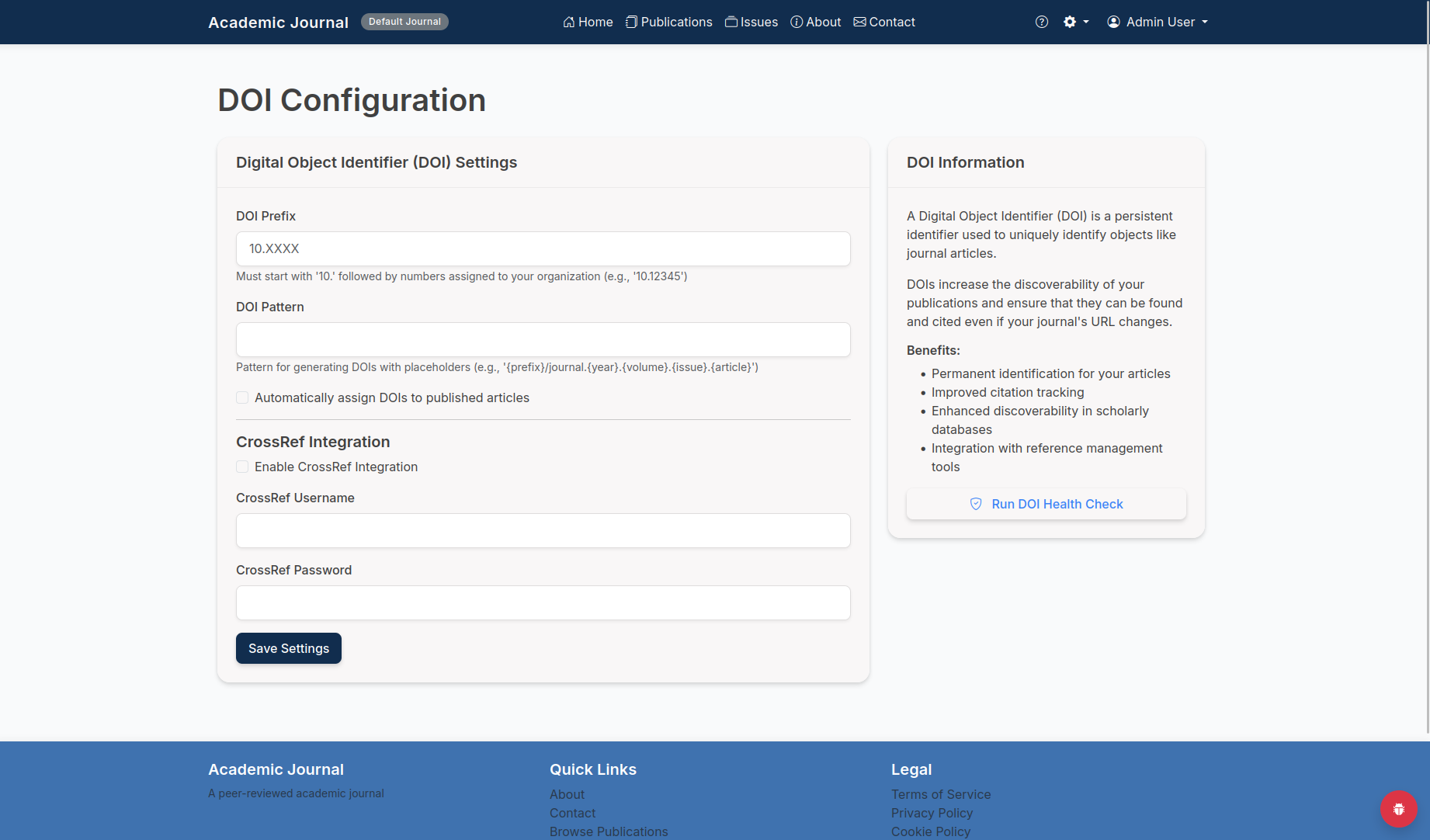
System Overview
EasyJournal represents a modern approach to academic publishing, replacing outdated systems with an intuitive, feature-rich platform that manages the complete publication lifecycle. Its multi-tenant architecture allows multiple journals to operate independently within the same system while sharing core functionality.
The platform combines powerful workflow automation with a clean, responsive user interface to create an experience that's accessible to all participants in the publishing process, regardless of their technical background.
Multi-Tenant
Each journal operates in its own secure environment with dedicated settings, workflows, and access controls.
Robust Security
Role-based access control ensures users only see content relevant to their responsibilities.
Customizable
Journal administrators can tailor the platform to reflect their publication's unique identity and requirements.
Key User Roles
EasyJournal supports a comprehensive set of user roles, each with specific permissions and responsibilities within the publication workflow:
Author
Researchers who submit manuscripts for review and publication. Authors can:
- Create and edit submissions
- Track submission status
- Respond to reviewer comments
- Submit revised manuscripts
Reviewer
Subject matter experts who evaluate submissions. Reviewers can:
- View assigned manuscripts
- Submit comprehensive reviews
- Recommend decisions (accept, revise, reject)
- Manage their availability and expertise areas
Editor
Publication decision-makers who oversee the review process. Editors can:
- Screen initial submissions
- Assign reviewers to manuscripts
- Monitor review progress
- Make publication decisions
- Manage publication scheduling
Administrator
System managers who configure and maintain the journal. Administrators can:
- Manage user accounts and roles
- Configure journal settings
- Customize submission forms
- Define publication categories
- Access system-wide analytics

Role-Based Permissions Matrix
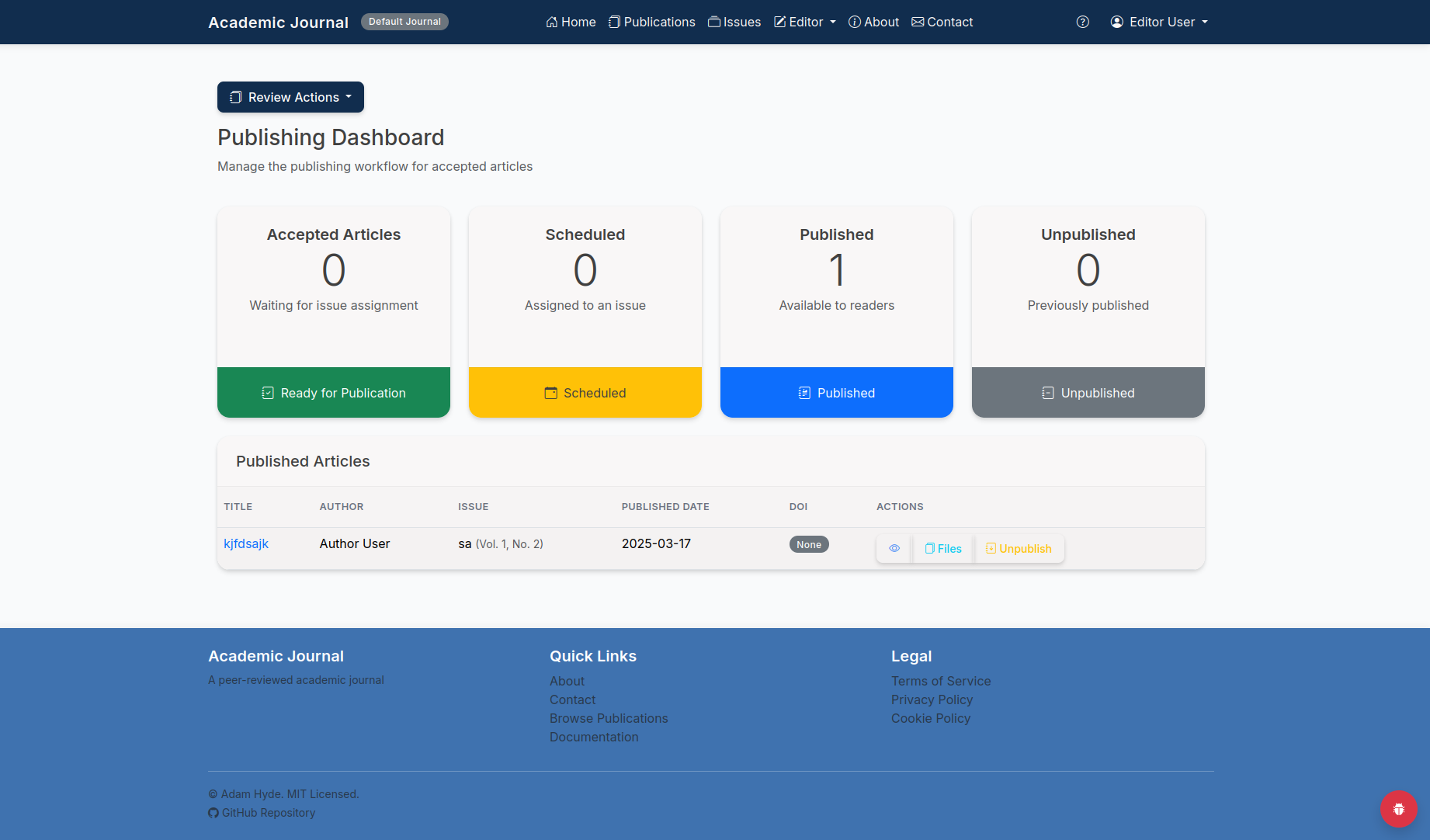
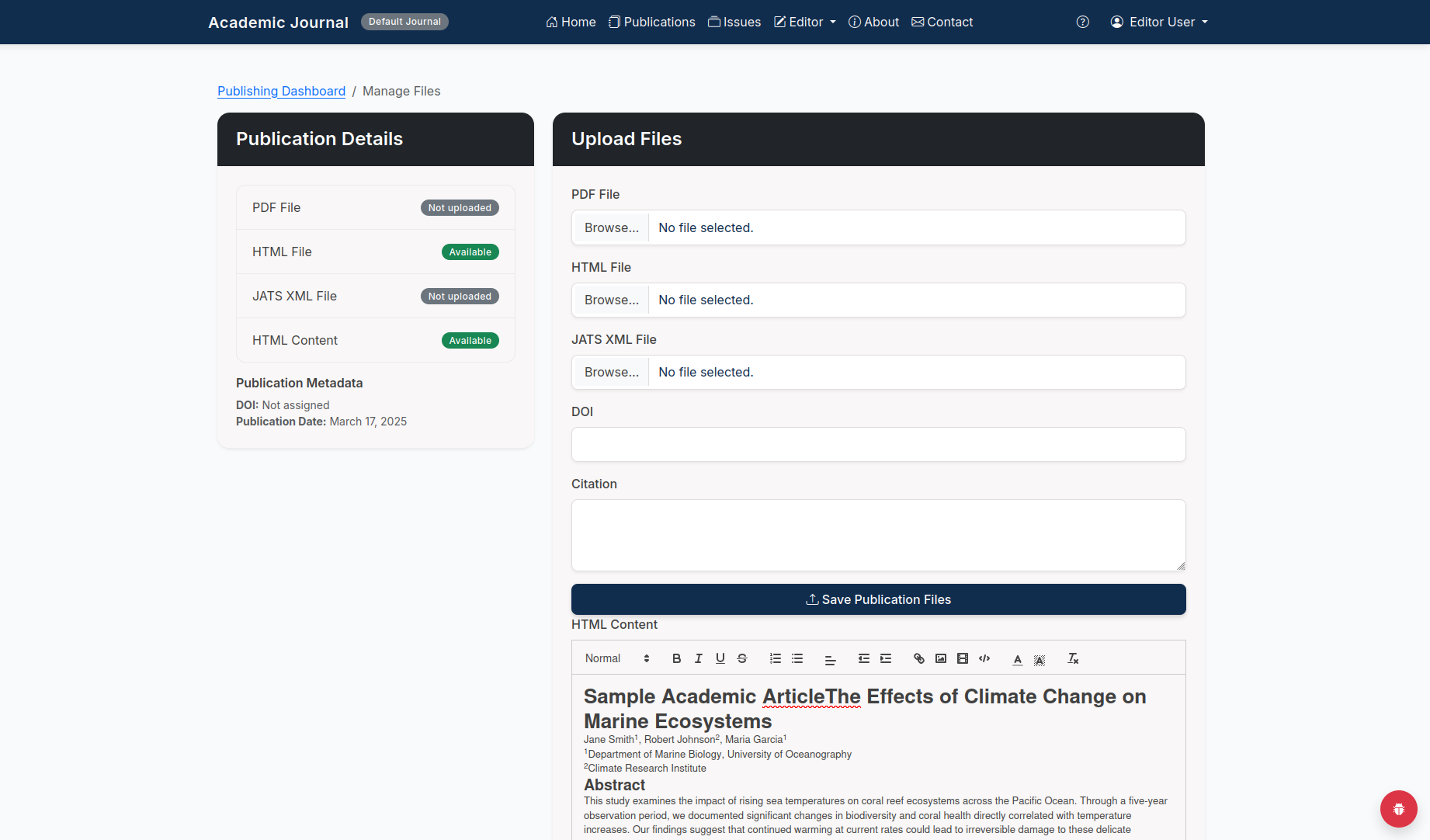
Publication Workflow
EasyJournal implements a comprehensive academic publication workflow that guides manuscripts through the complete lifecycle from initial submission to final publication:
Submission
Authors create an account, complete the submission form, and upload their manuscript and any supplementary materials. The system provides a customizable form builder that allows journals to collect precisely the information they need.
Initial Screening
Editors perform an initial assessment to determine if the manuscript meets basic criteria for peer review. They can directly reject submissions that don't meet requirements or forward promising manuscripts to the review process.
Peer Review
Editors assign appropriate reviewers based on expertise and availability. Reviewers access the manuscript, complete a structured review form, and provide recommendations. The system supports multiple review rounds if necessary.
Decision & Revision
Based on reviewer feedback, editors make a decision (accept, revise, reject). Authors receive notification and can view detailed feedback. For revisions, authors submit updated manuscripts that address reviewer comments.
Production
Accepted manuscripts enter the production phase, where they are formatted according to the journal's standards. This may include copyediting, typesetting, and final author approval of proofs.
Publication
The final article is published in the journal issue and made available to readers. EasyJournal supports multiple publication formats (PDF, HTML, XML) and integrates with digital object identifier (DOI) services.

Publication Workflow Overview
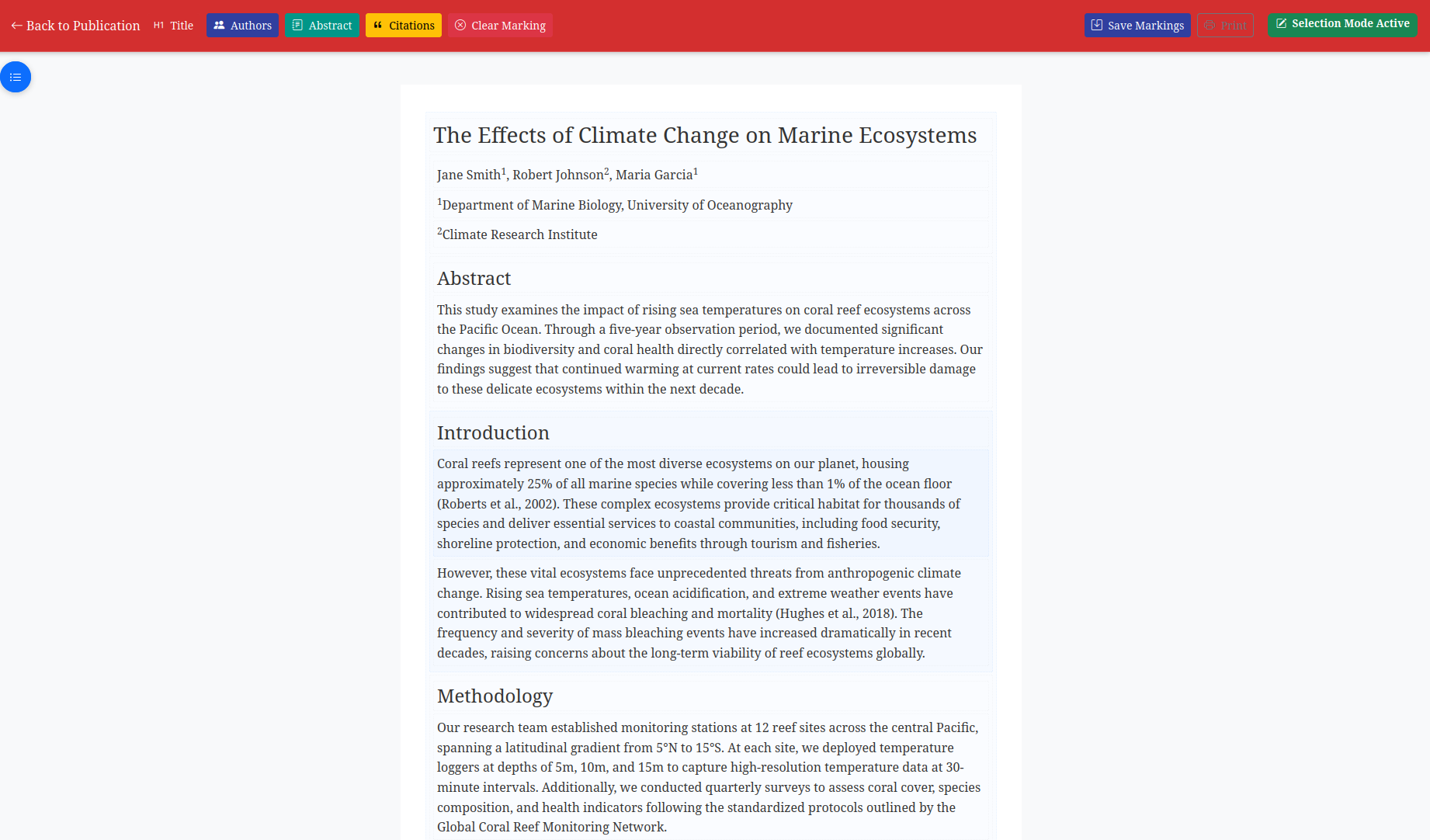
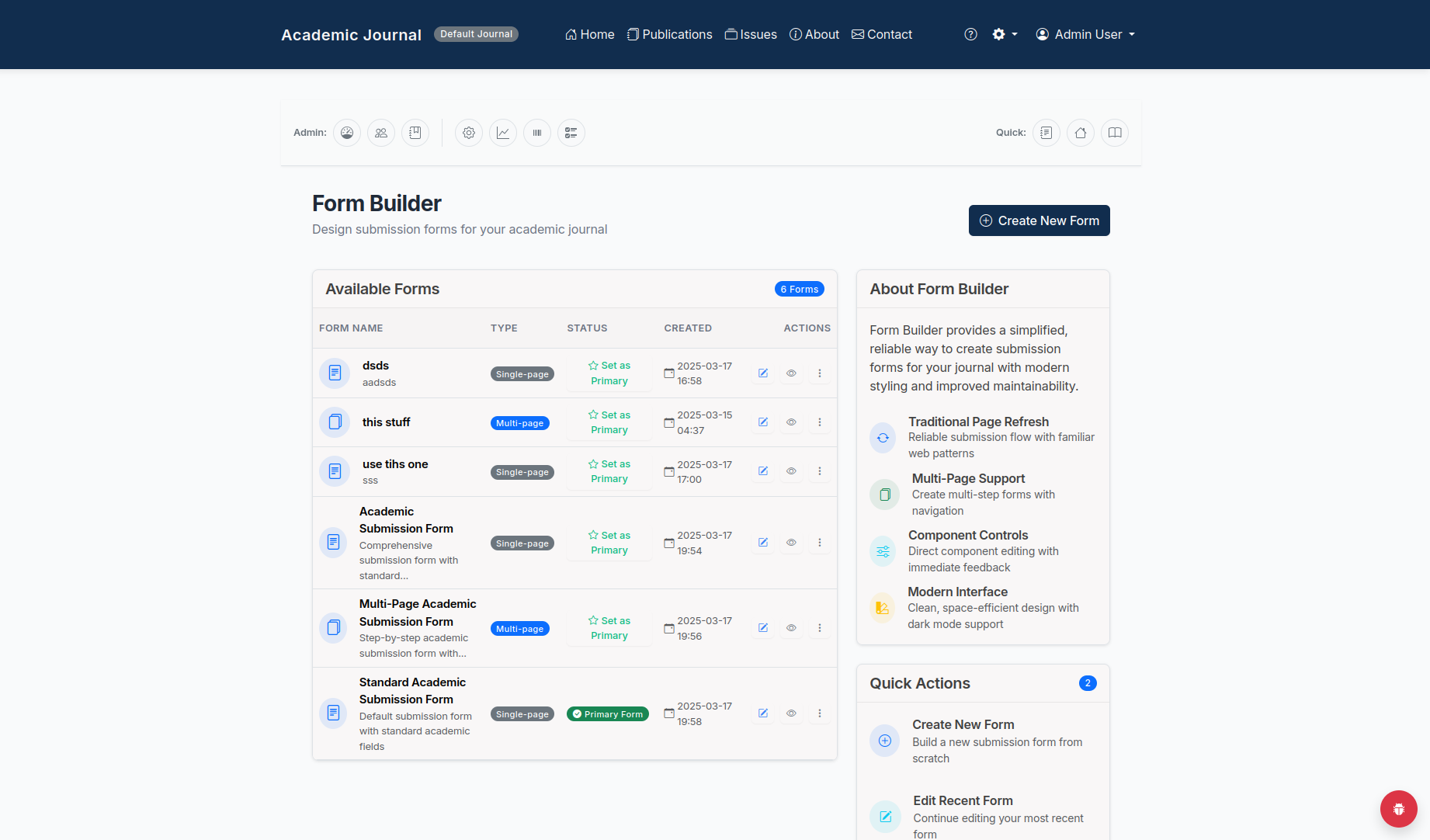

Key Features
Dynamic Form Builder
Create customized submission forms with a drag-and-drop interface. Define exactly what information and files you need from authors for your specific discipline.
Comprehensive Review System
Structured review forms, double-blind options, and reviewer selection tools ensure a thorough and fair evaluation process for all submissions.
Automated Notifications
Keep all participants informed with customizable email templates for every stage of the workflow, from submission acknowledgments to publication announcements.
Analytics Dashboard
Track key metrics like submission rates, review times, acceptance rates, and more with visual reports that help optimize your publication process.
Theme Customization
Personalize the look and feel of your journal with customizable themes, logos, and color schemes to maintain consistent branding throughout.
Integrated Bug Reporting
Built-in system for users to report issues directly through the interface, complete with screenshot capability and console logs for efficient troubleshooting.
Getting Started
This documentation will guide you through all aspects of using EasyJournal, from basic navigation to advanced administrative functions. Use the navigation menu to explore specific topics relevant to your role.
If you're new to EasyJournal, we recommend starting with the following sections:
- Account Setup - Creating and managing your user profile
- System Navigation - Understanding the interface and finding features
- Role-Specific Guides - Detailed instructions for your particular role
Need Additional Help?
If you encounter any issues while using EasyJournal, you can:
- Use the built-in bug reporter (click the icon in the navigation bar)
- Contact your journal administrator for journal-specific questions
- Email the EasyJournal support team at support@easyjournal.com